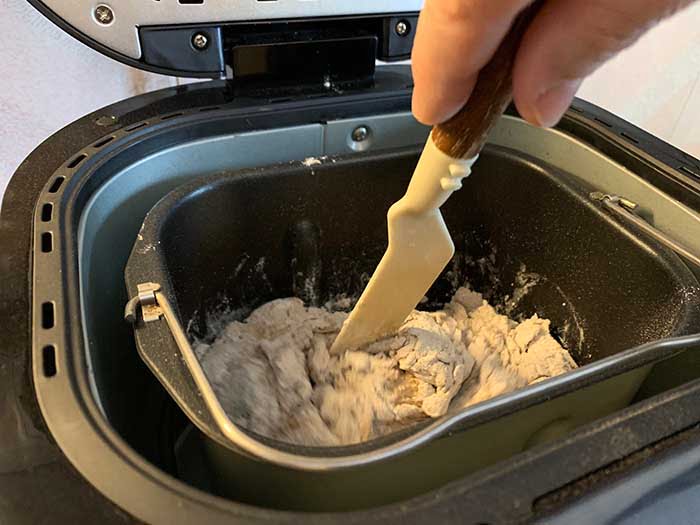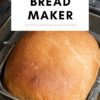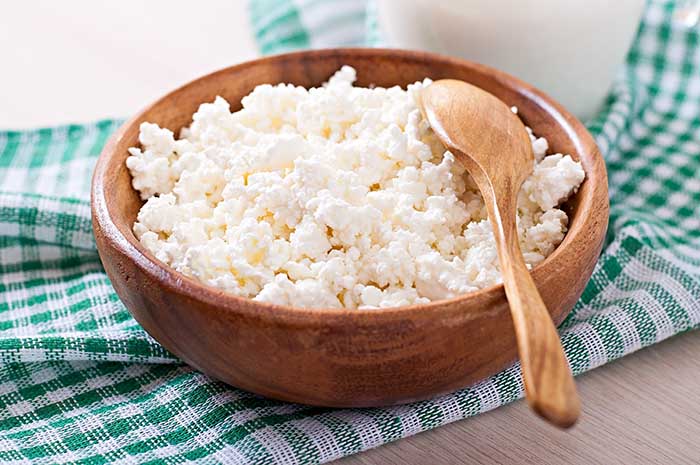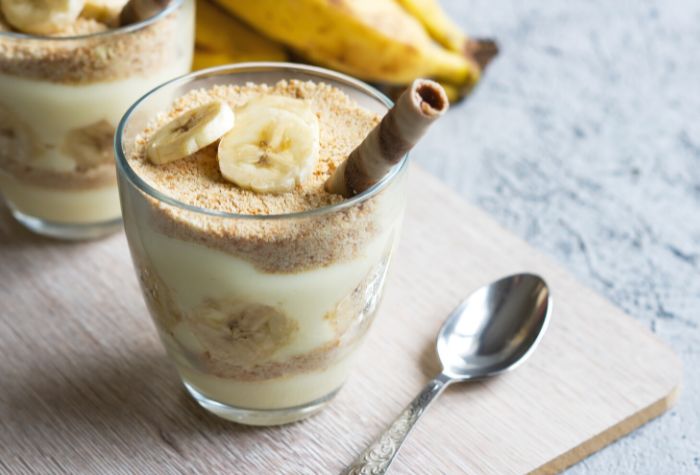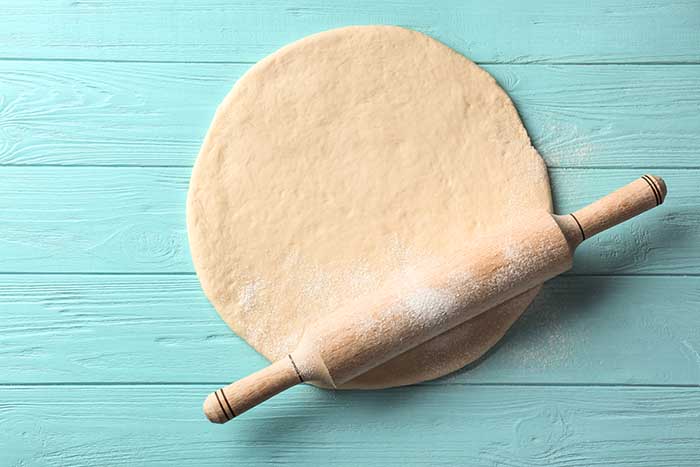Perfect the art of home bread making, from developing a golden crust to getting the perfect rise from your dough. Expert tips and step-by-step guide to using your new bread machine.
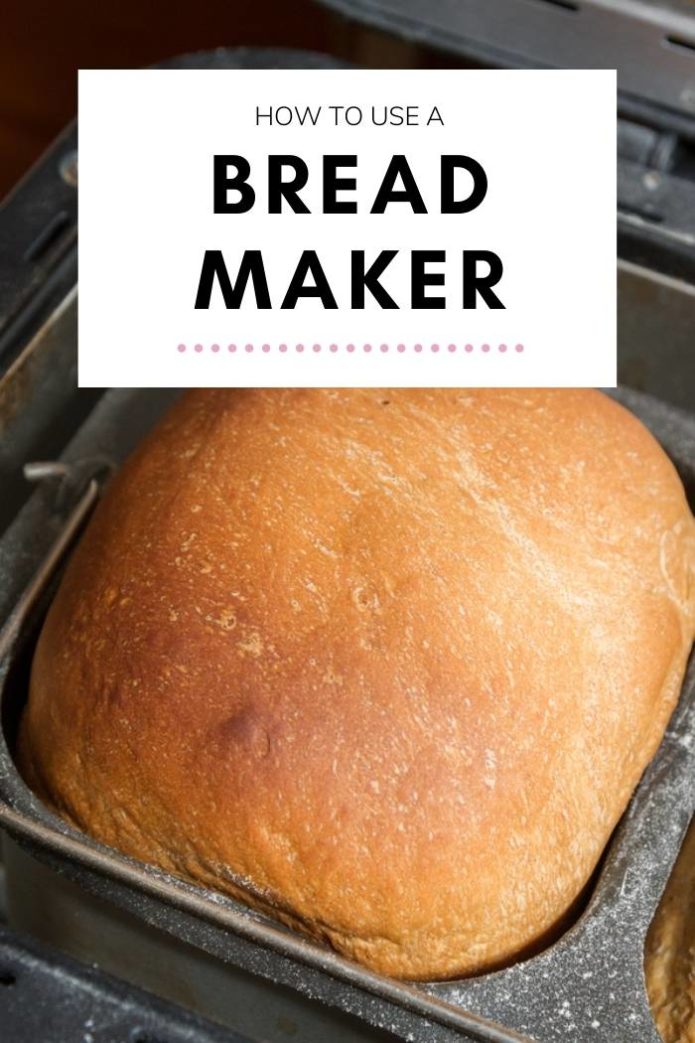
Kitchen bread makers have transformed home baking for all loaf lovers. They boast a variety of settings to help you get the bread you want whether it’s a simple white loaf or sourdough.
Not sure where to start? In this guide, we look at the ingredients for your dough mix, what settings to use, and how to get the most out of your loaf pan. Here’s how to use a bread machine to help you get your loaf right every time.
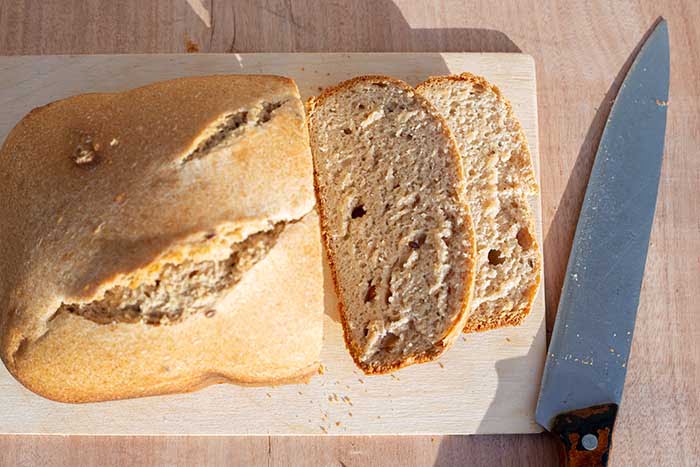
How do Bread Makers Work?
A typical bread machine will have a bread pan as well as paddles. It also has an element to heat the ingredients, thus baking them gently. While bread machines may differ, the basics usually don’t change much. Ingredients are mixed in the bread pan, which is then put in the bread maker. As you add the ingredients, it’s important to make sure that you add them in a specific manner, keeping the yeast away from the water until you are ready to activate it.
The best bread machines allows the ingredients to reach an optimal temperature, and then the paddles in the machine stir the dough. At the right temperature, the dough is proofed and then baked. Once the bread is baked, you can then remove the tray from the bread machine.
However, the paddle will leave a hole in the bread, and this can often be sighted as a downside, as it gives an unusual shape, which is different from other store-bought loaves. The exact ingredients will depend on the recipe you use, which is made for the bread machine you are using.
You will find that each bread machine comes with a unique recipe that is tailored for the capacity it can handle. Some bread makers have a heating element on the lid. When the machine is used right, this will help get your crust from brown to a beautiful golden color.
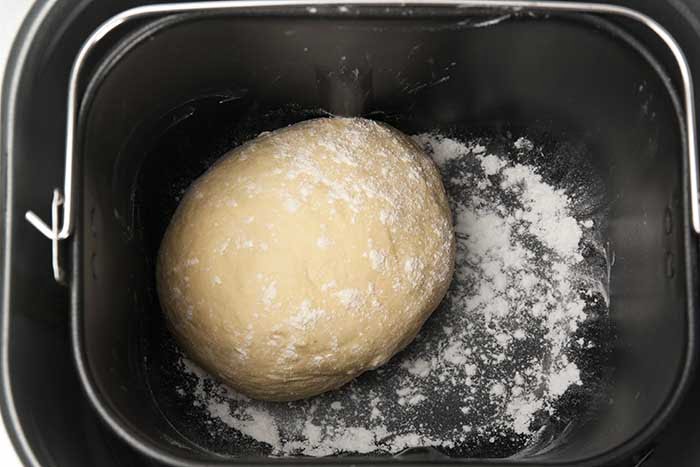
Benefits
One of the first and most obvious benefits of using a bread machine is that you will not need to knead. This means that making bread will be easy. Also, it means that you can have fresh homemade bread when you want it.
Making your bread has the enormous advantage of helping you know what’s hone into it. If you have any dietary preferences, this would be the best way to tailor your bread.
What are Bread Makers not Good for?
Bread makers are not good if you look to have a loaf-shaped one like those you would find in a shop. The bread made in a bread maker will take up the shape of the bread maker, and it will also have an indentation where the paddles were. Also, some bread makers may not give you the crispy crust as what you may get on store-bought loaves.
They are also not suitable for small kitchens without any countertop space. Bread makers are also not a good fit for sourdough. While it won’t be impossible, it’s better not to try. Bread makers are also not so suitable for an over-floured wet dough.
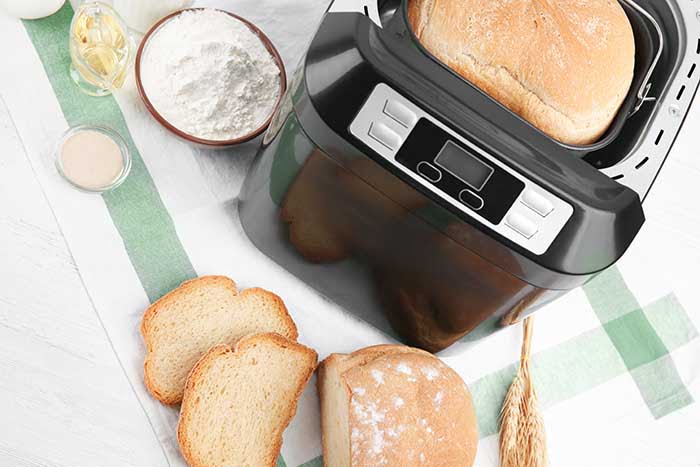
Settings
The different cycles on a bread machine are necessary to get you the various characteristics of the loaf that you want to make. The settings available on bread makers are often essential, sweet, whole wheat, French, gluten-free, rapid, express, jam, dough, cake, and bake.
These different settings allow you to make various recipes.
How to Use a Bread Machine
- Each bread machine and manufacturer have particular instructions. Before you set out to use your bread machine for the first time, make sure to get well acquainted with the dos and don’ts. Read the manual, inspect the machine and know what goes where. Also, know the capacity of the bread bucket.
- Ensure all the necessary parts are there, such as the bread machine, the kneading blade, and the bread bucket.
- Know how the settings work
- Decide on the recipe and set your machine accordingly.
- The ingredients that you will need are flour, water, fats, yeast, and salt. Make sure that all the liquid ingredients used in the bread maker are at room temperature.
- Add the liquids into the bread pan first.
- Add in the flour, making sure to seal in the water.
- Add the rest of the dry ingredients.
- Lastly, add the yeast. You could do this by adding it to a well in the flour.
- Make sure the bread pan is snapped into place.
- Set the bread maker to the desired Setting, using the cycle to give you the preferred result. Then press start.
- Allow it to bake for the set time.
- Then remove the bread pan, let it cool and serve.
How to Clean a Bread Machine
The first thing to do is to clean out the bread pan. Dust off any bits of flour that are in it. Do this by laying it on its side, so you tilt everything out of the different nooks and crannies. Brush out the dust using a light brush. Don’t try to wash it as this will damage the electrical components. For any liquids, use a soft cloth to wipe them down.
Once the bread pan is clean, you can now start thinking about cleaning the elements. Make sure the bread maker is cooled down and has been off for a while. Then use a damp cloth to wipe down the heating elements. Make sure the fabric is not soaking wet and also that no water droplets are reaching the elements.
This could cause a short circuit, so be gentle when you wipe the elements. Remember not to push, pull or tug. The safest bet would be to use cleaning wipes. This way, there is no excess water, and also, there aren’t any detergents or soap being used. The next step would be to clean the bread pan. Using warm soapy water, dip your washing rag in the water, then wipe down the pan. Rinse the pan once you are done.
When you clean the pan, make sure not to use scouring wire or any abrasive material. This will scratch the non-scratch coating on the pan, which prevents the bread from sticking to the bottom. Also, make sure to clean the hook and paddles, ensuring that you reassemble them when they are entirely dry. This will help to prevent rust.
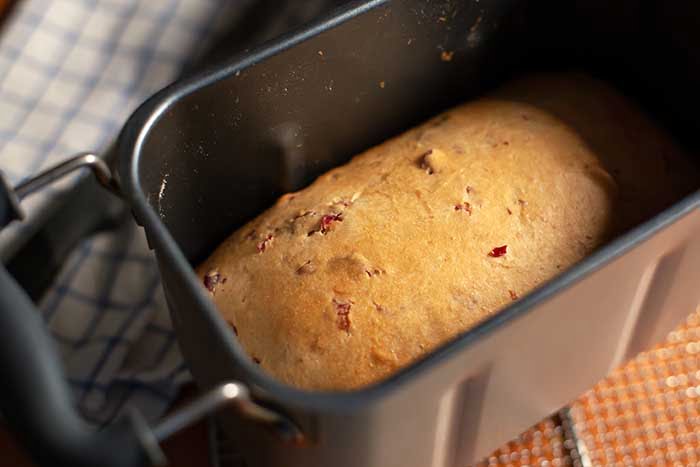
Bread Maker Recipe Ideas
- Bread Machine Rosemary Bread With Dried Cranberries and Pecans – This recipe is a great variety of bread. It allows you to get different flavors on an otherwise dull loaf of bread.
- Honey Whole Wheat Bread – For those with a taste for honey, this recipe is a winner. It’s pretty simple. All you will need to do is add salt and honey, butter and flour to your bread machine, and then bake. At first glance, it will look like an ordinary loaf, but the first bite will quickly prove you wrong.
- Pretzels – Bread isn’t the only thing that you can make in a bread machine. You can also make pretzels. This is a quick and easy pastry that you can make in the bread machine.
- Banana Chocolate Dip – Make this delightfully sweet treat in your bread machine. It’s an easy recipe that only requires you to place the ingredients in the bread maker and let the machine do the rest of the work. The loaf doesn’t only taste great, but it also makes the house smell like a baker’s heaven.
- Gruyère Apple Pie Cinnamon Rolls – This is a great way to upgrade the standard cinnamon roll. It is a combination of cheesy goodness and sweet apple pie. Also, it is often drizzled with vanilla mocha. It’s another great dessert that you can make in the bread machine.
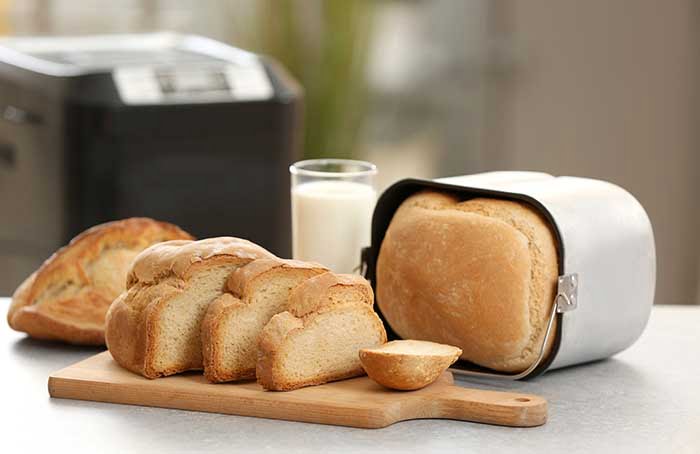
Expert Tips
Why is my Bread Dense and Heavy?
Bread can feel dense and heavy if you use too much liquid. This is why it is essential to follow the instructions that come with the machine precisely. Your dough should look more like a ball when ready for baking and not like a soup of sorts.
The other plausible reason for dough that’s not rising, hence giving birth to a stodgy loaf, would be that you’ve used yeast that was no longer good for baking. It may have expired, or it may have too much salt. To combat dense dough, you may want to switch out the flour for a higher protein flour. Bread flour is often the best bet for making bread with the proper density.
Can I use Regular Flour in a Bread Machine?
Yes, you can. If you only have all-purpose or regular flour, you can still put it in a bread machine. The key is to check if the protein content is high enough and matches what you would get in bread flour. If the gluten levels don’t quite match, then the loaf may not rise as well.
What Flour is Best for the Bread Machine?
The best flour to use would be bread flour. The manufacturer that you choose is up to you. The best bread flour will depend on what is at your disposal. Take into consideration dietary preferences such as how much gluten you can take, if at all.
The best kinds of bread flour are strong, not bleached, high in gluten, and unbleached.
Do you Grease Bread Machine Pans?
Greasing your bread pan helps keep the dough from sticking to the machine as it bakes. While this may not be something specified in the manual, it is a helpful hint to have. Greasing the bread pan also helps keep it from rusting, which can result from exposure to liquid.
Should Butter be Melted for the Bread Machine?
No, you will not need to cut butter for it to be used in the bread machine. You will only need to melt the butter you use in a bread recipe if it calls for it.
How do you use the dough Setting on a Bread Maker?
The dough setting on a bread maker is there to do the heavy lifting. One of the main downfalls of loaves made in a bread maker is that they are often misshaped. The paddles will leave a hole in the bottom, and the loaf rarely looks like a regular loaf.
To deal with this, you can use the dough setting to mix the dough. Then remove the dough, place it in a bread tin of your choice, and bake it in the oven. This way, you get the crackly crust and shape you want, with the bread maker preparing the dough for you. This way, you are guaranteed the kneading is done to perfection.
In What Order do you put Ingredients in a Bread Machine?
Add the liquid ingredients first, and then add the dry ingredients, starting with the flour and then the other dry ingredients.
Can I Make Anything Besides Bread?
You can also use a bread maker to make a cake, meatloaf, jam, sauces, soups, rice, scrambled eggs, and even yogurt.
Should you use Warm Water in a Bread Machine?
It is best to use warm water for the yeast. The water needs to be about 80˚F.
